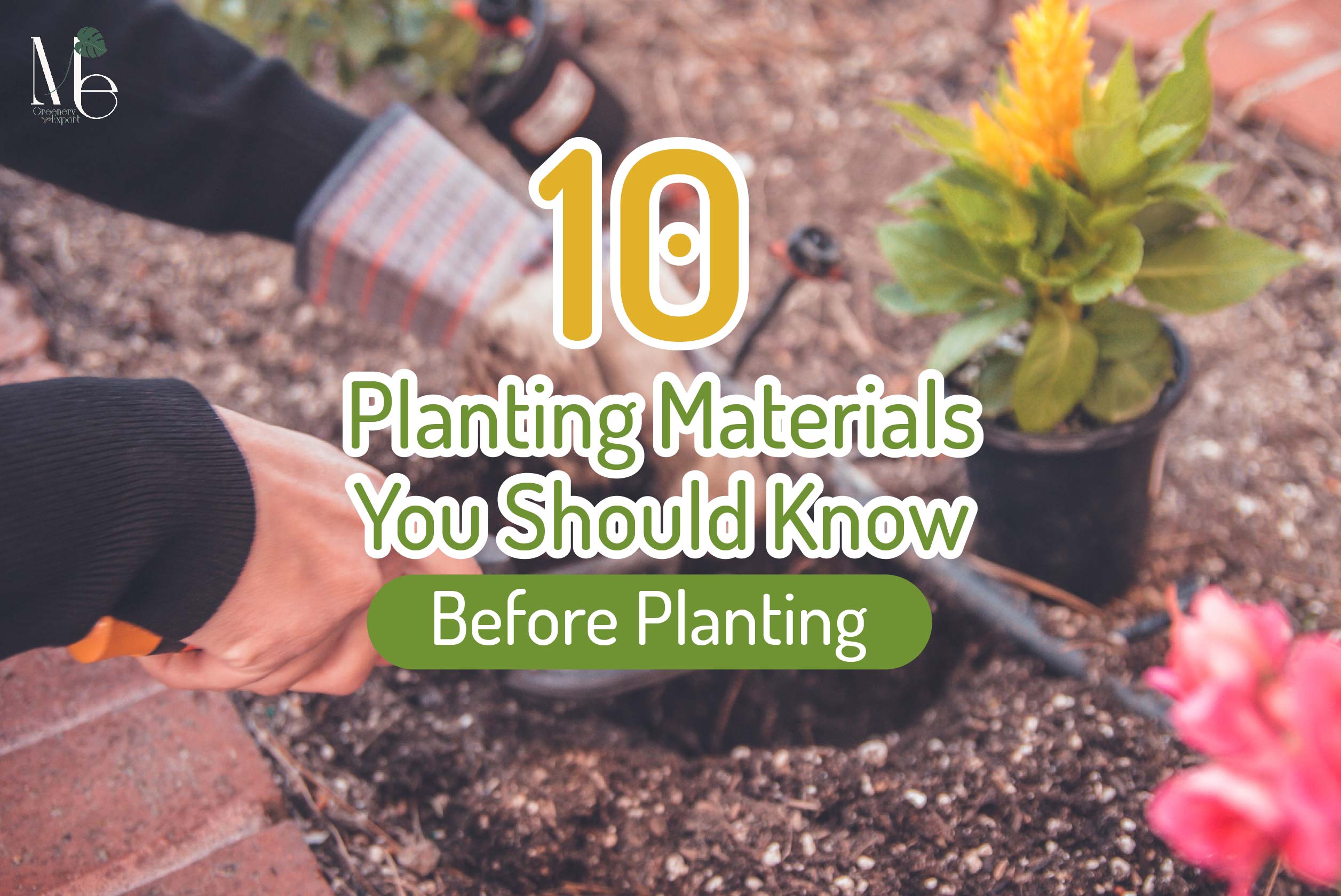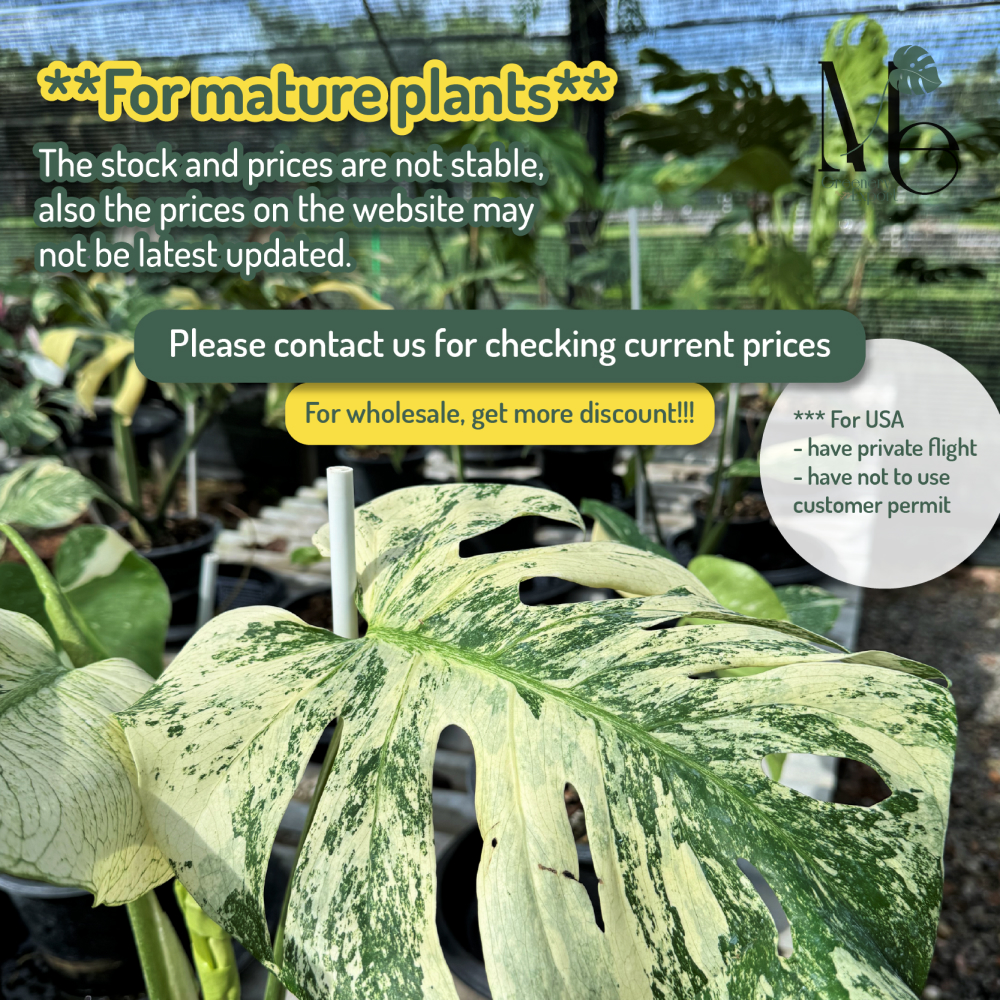No products in the cart.
10 Planting Materials You Should Know Before Planting
DATE : December 14, 2021 By : admin
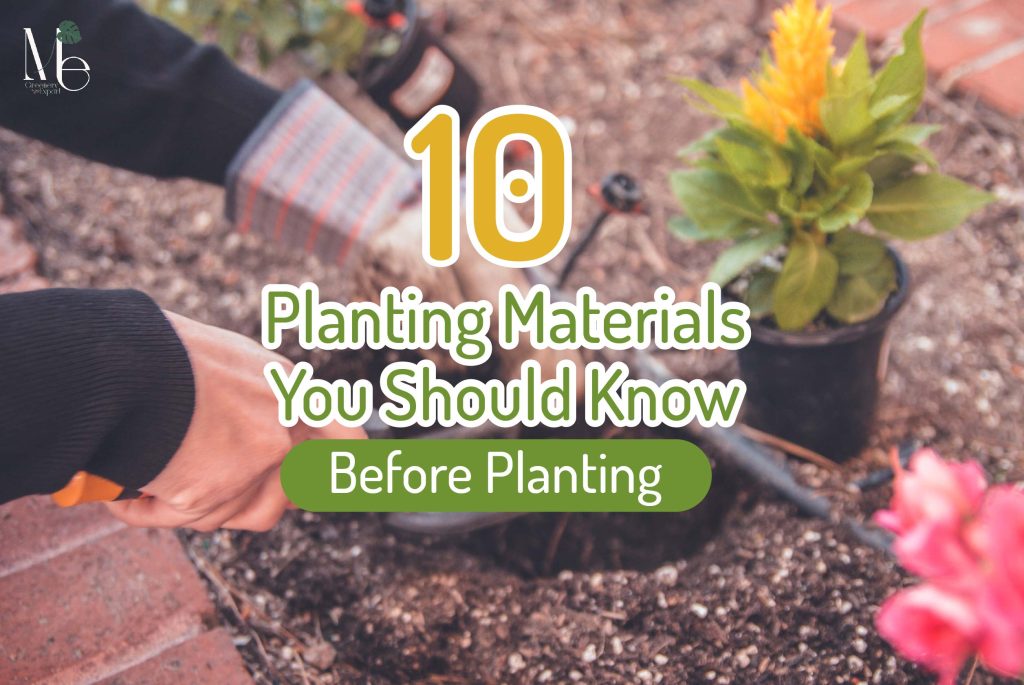
We have talked about planting materials a little bit from our blogs in the past. Planting materials for foliage plants are not only soil, coconut husks, or rain tree leaves, but there are also many types of planting materials. Each of these planting materials has different properties and can be mixed to enhance more benefits for plants. So, today we would like our lovely readers to read and study what kind of planting material is suitable for your plant. Let’s see it!
Planting Materials
1. Ready-made soil
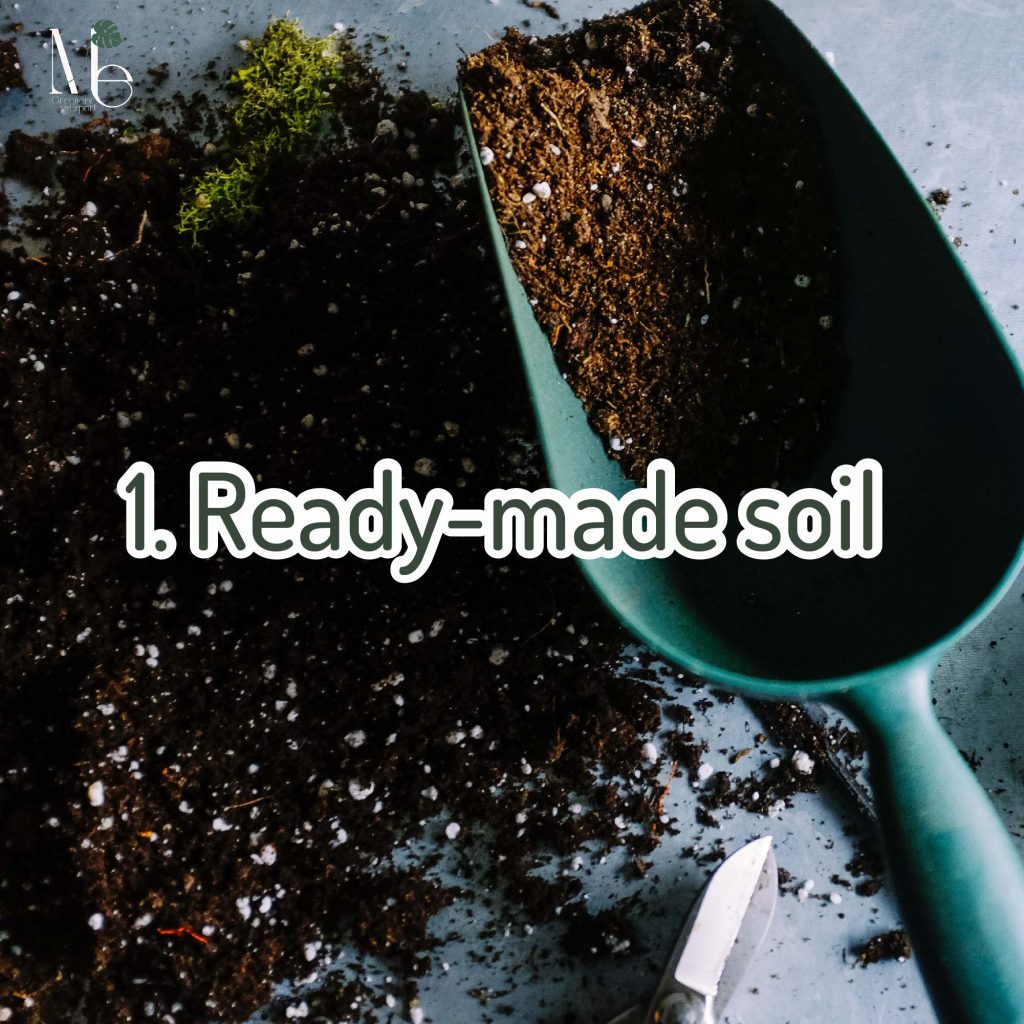
The bagged soil sold at plant shops or the roadside is soil that has been mixed and can be used to grow plants. However, some plants require a lot of nutrients, so you should mix some planting material into it, such as perlite, vermiculite, and rain tree leaves. If you want something that crumbles, you can add volcanic rocks.
2. Rain tree leaves

Rain tree leaves used as planting material are produced by fermenting the fallen dried rain tree leaves by inserting microorganisms. Then, wait until the rain tree leaves have decayed into small pieces or powder. Let them dry before mixing them with soil because the leaves that are piled up inside will accumulate heat. If planted immediately, it may cause the roots to die. The rain tree leaves are high in nitrogen, nourishing the trunk and leaves, and can meet almost any plant needs. Besides, it is slow decomposing and can help maintain the soil.
3. Chopped coconut husks/Coconut coir
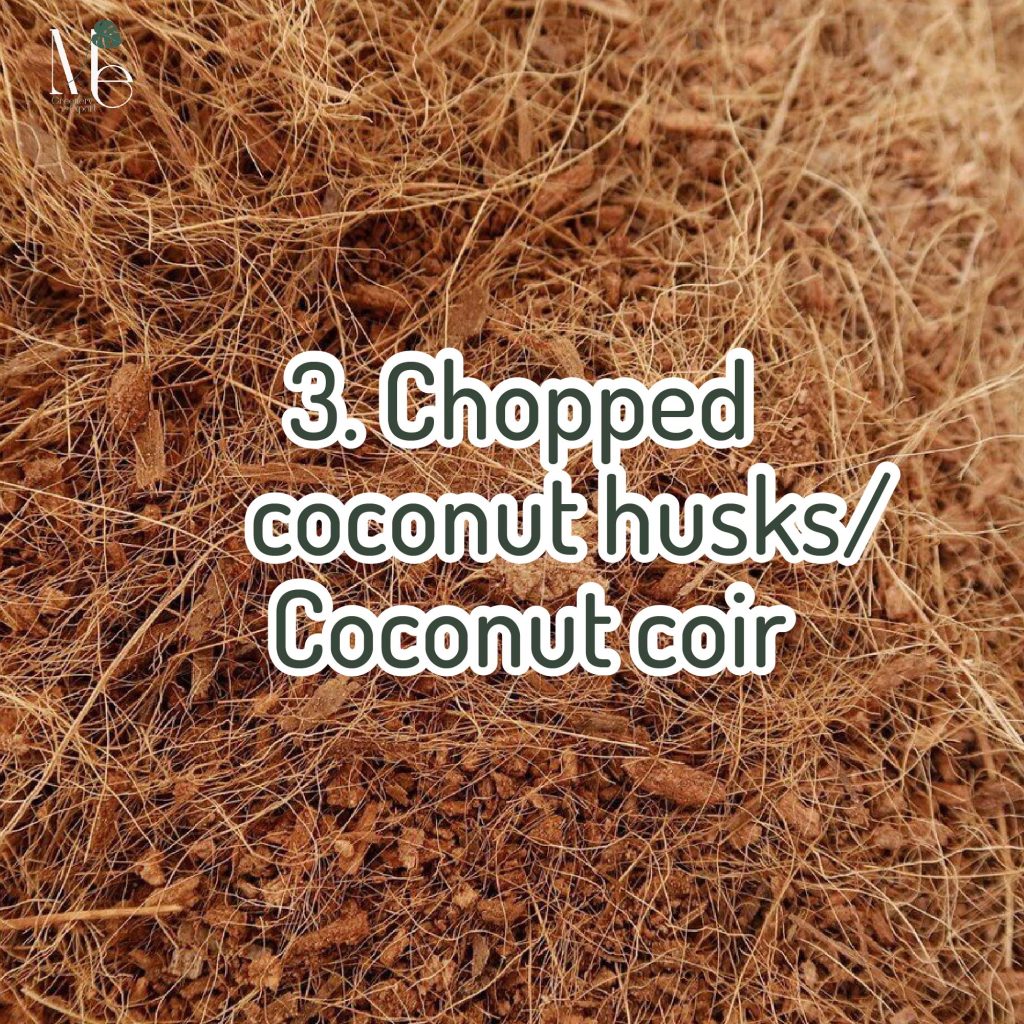
Chopped coconut husks are a popular planting material for foliage plants. It is made from coconut husks that are chopped into small pieces. Coconut coir is extracted from the husks of the coconut that have been shredded. It can retain moisture effectively. Moreover, if mixed with soil, it will help increase the gaps in the soil, making it translucent. For foliage plants, like Monstera and Philodendrons can use only chopped coconut husks to plant in a pot. If the plant is still young, it is better to use coconut coir. Coconut husks or coconut coir should be soaked in clean water for 2-3 days before to remove all tannins. Furthermore, you should change the planting material every 6 months because it has a short lifespan. Small pieces of coconut husks will deteriorate quickly, and coconut coir has a lifespan of around 2 months.
4. Perlite
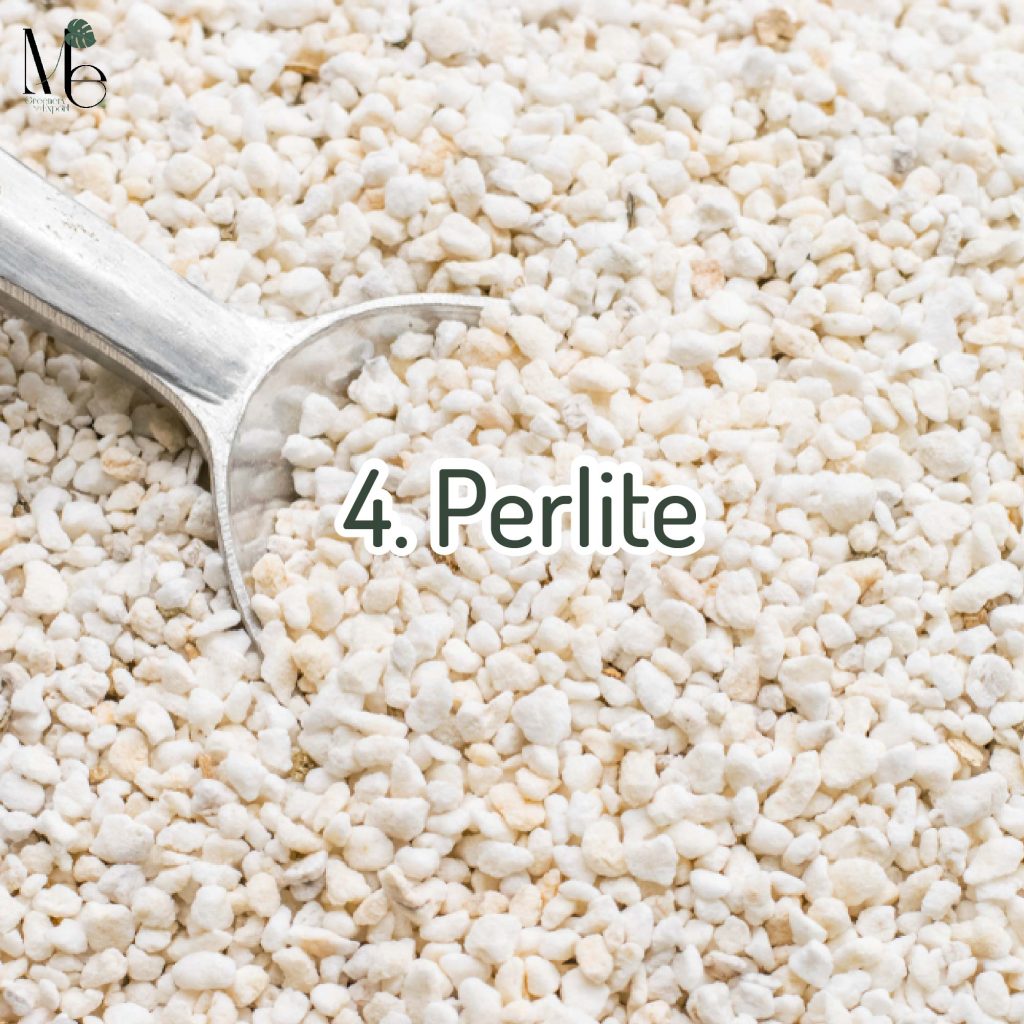
Perlite is a mineral obtained from the breakdown of volcanic rocks. It is porous, lightweight, shaped like a sponge. Moreover, it retains moisture and nutrients perfectly and drains well because it is very porous. It is often used as a planting material mixture with vermiculite. The use of perlite alone is not recommended because it is tiny. When watering continuously, this can cause the perlite to fill the gaps and squeeze the plant roots.
5. Vermiculite
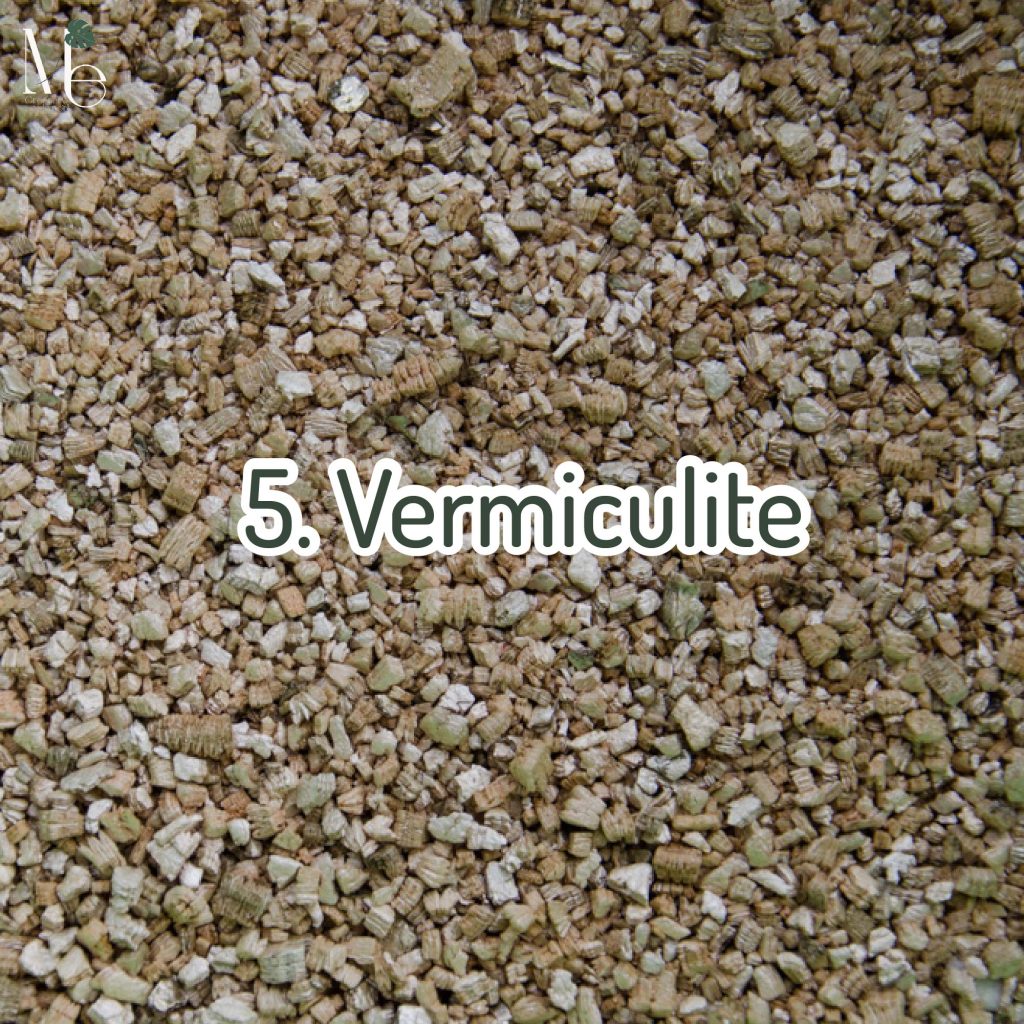
Vermiculite is a lightweight golden scaly mineral that absorbs water and retains moisture effectively. It contains significant nutrients, including phosphorus, potassium, magnesium, and calcium. In addition, it can exchange ions in the soil to be balanced. Popularly used to mix the soil to make it transparent. Often used with perlite or pure vermiculite in sowing seeds. It will begin to collapse when used for a while, but not dissolve.
6. Sphagnum moss
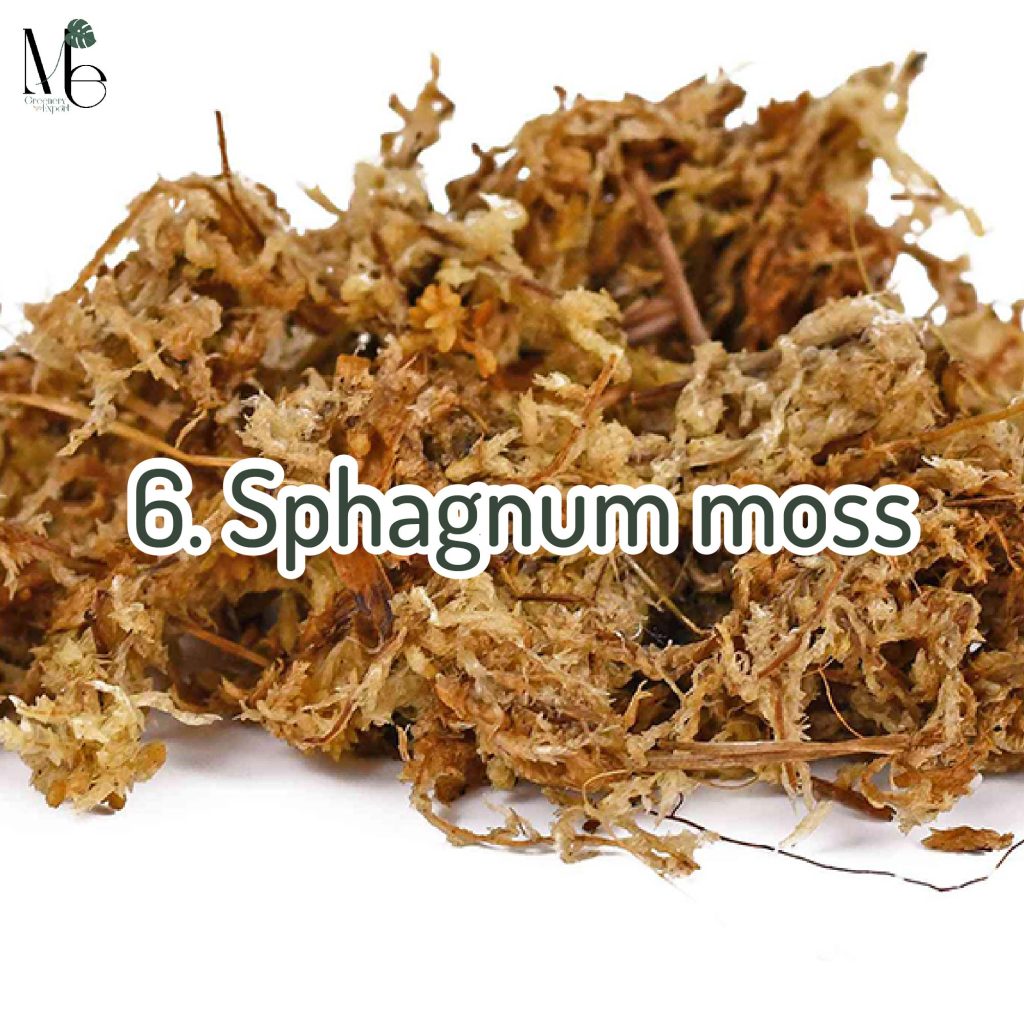
Sphagnum moss is a moss that has been dried for use as planting material. It is light, airy and holds water very well. Soak it in water to inflate it before using. Popular for nursing young saplings whose roots are not yet strong. Besides, it can be used to propagate plants or lure plant roots. If mixed with perlite as planting material, it will help improve ventilation. If brought to the top of the soil, humidity should be controlled because high humidity can cause root rot. It lasts for 1-2 years.
7. Peat Moss
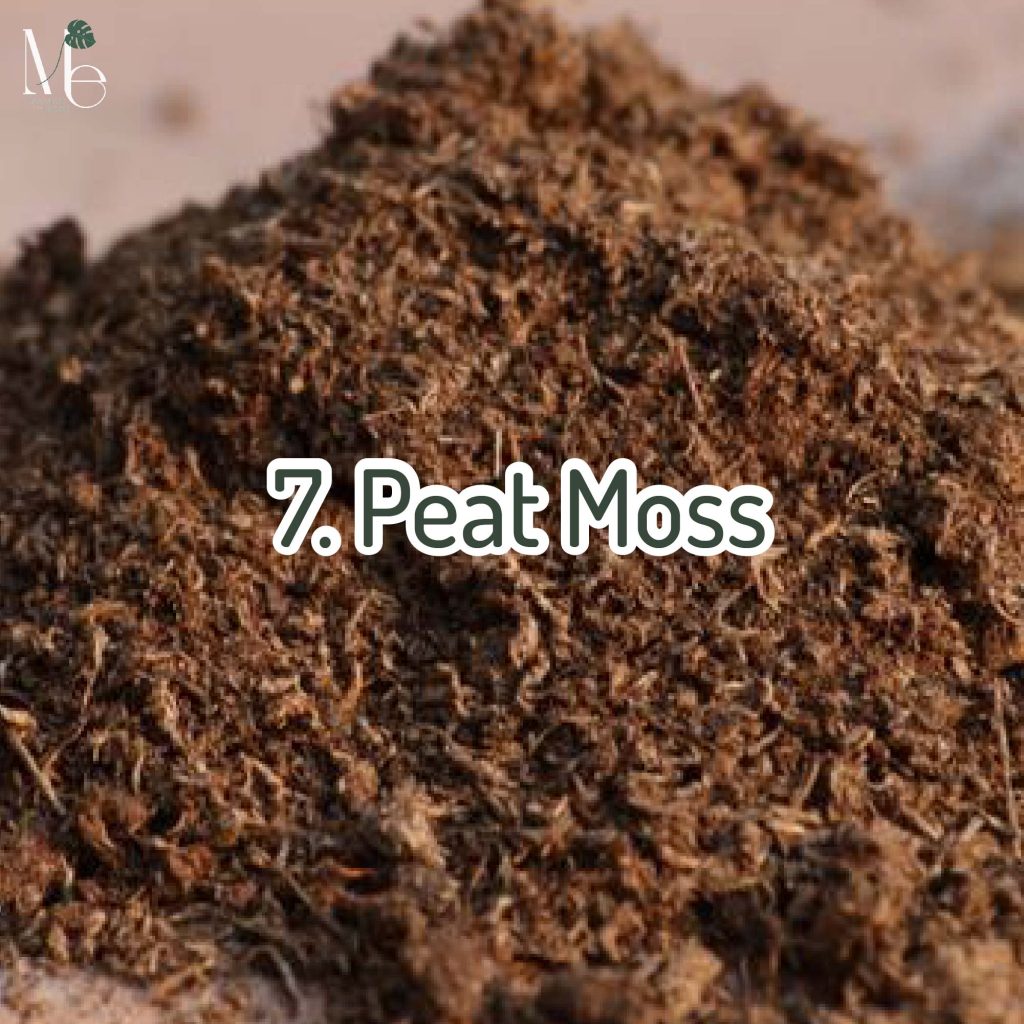
Peat moss is a moss that lies beneath the sphagnum moss layer and has been deposited for a long time. It looks like a brown-black fine powder. Free from germs and insects, It is a good source of bacteria and has a lot of nutrients suitable for planting seeds. Peat moss can be mixed with other planting materials such as bamboo soil and coconut husks. It is perfectly good at retaining moisture, but the disadvantage is its short lifespan. When receiving unstable humidity, it will dry out, harden and compress the roots. Therefore, it is unable to continue using.
8. Black rice husk / Raw rice husk
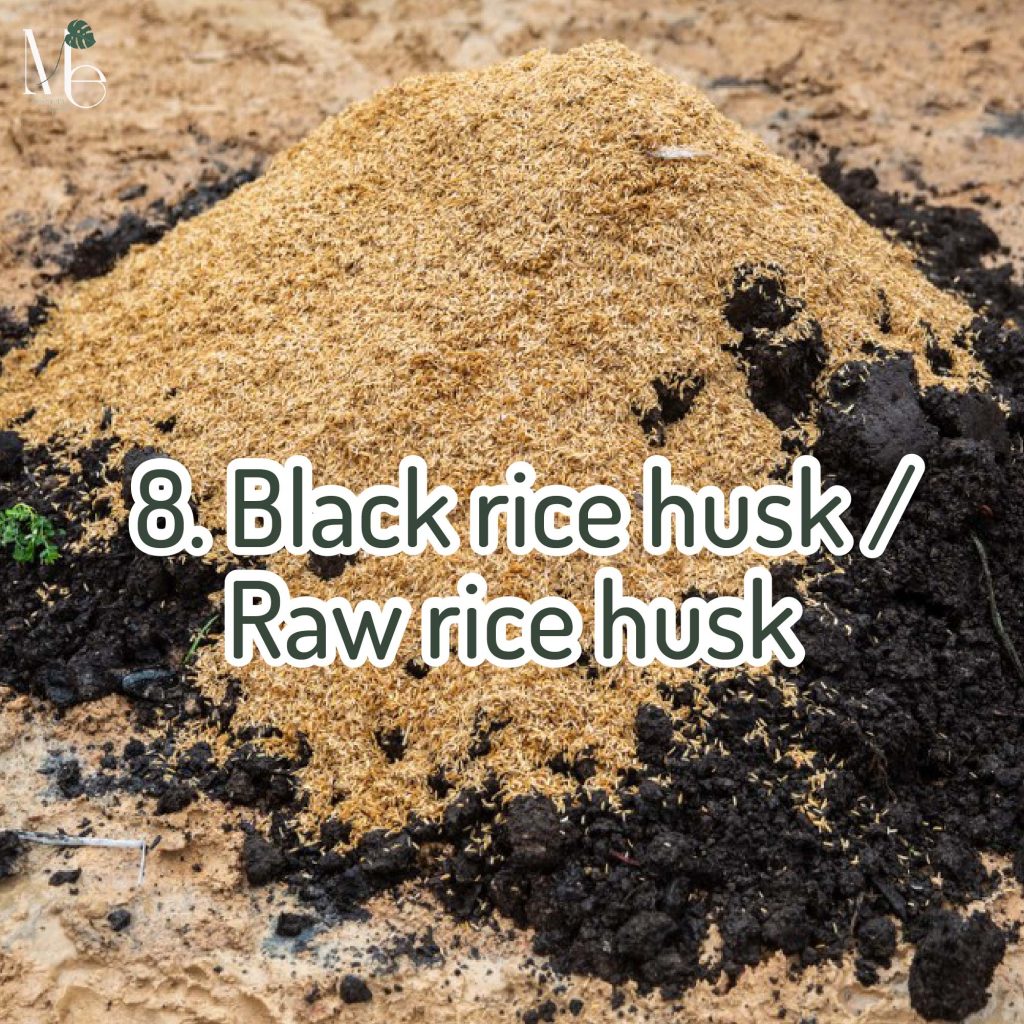
Black rice husks are rice husks made from the incomplete combustion of raw rice husks. It is fine-grain, transparent, retains water, and perfectly drains. Moreover, it can help reduce soil acidity. Raw rice husk is lightweight made from rice milling. Both raw rice husk and black husk are commonly mixed with other planting materials to increase the looseness of the soil.
9. Bamboo soil
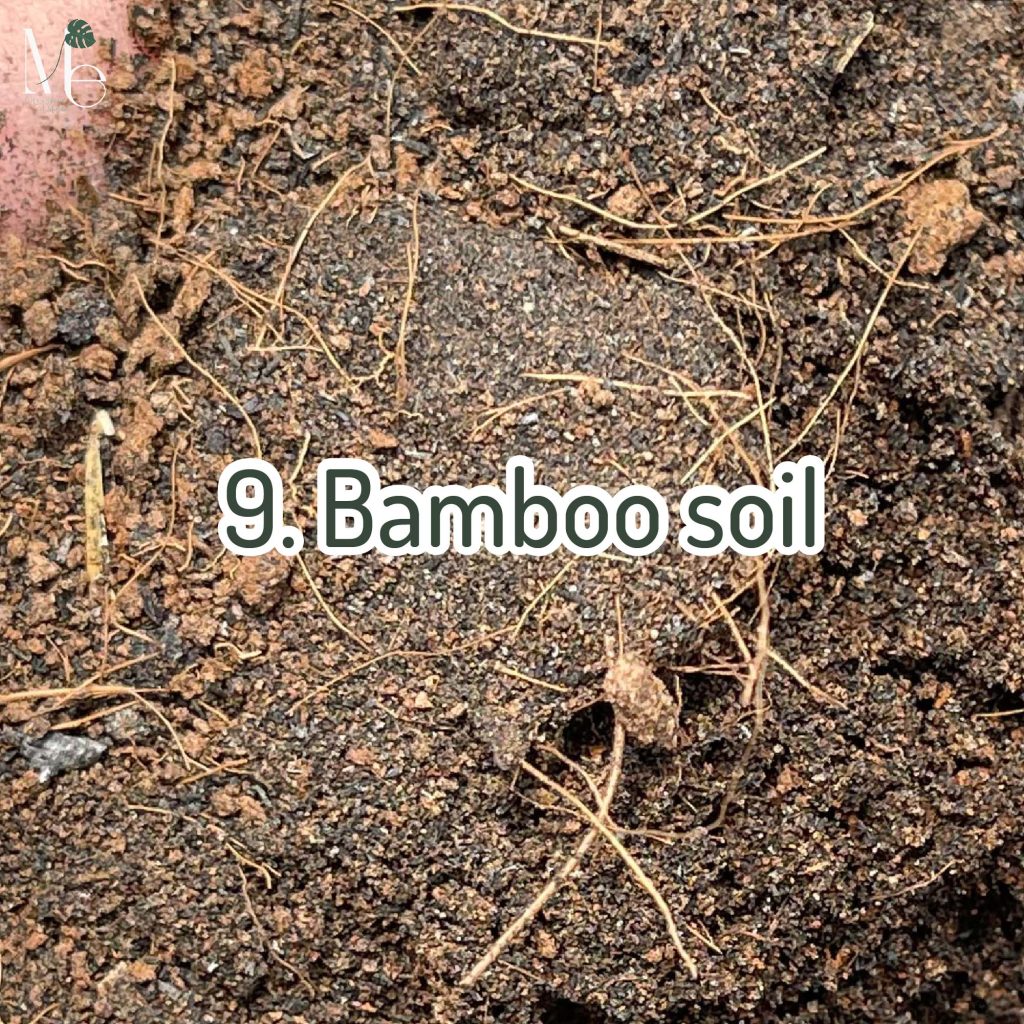
Bamboo soil is the deposition of bamboo leaves under the bamboo plant. When receiving microorganisms or rainwater, it will cause the leaves to gradually decompose into powder. Bamboo soil contains Trichoderma, a fungus that prevents root rot, trunk rot, and also has other nutrients that help the plant effectively grow. Bamboo soil is crumbly, so it is commonly mixed with other planting materials.
10. Volcanic Rock
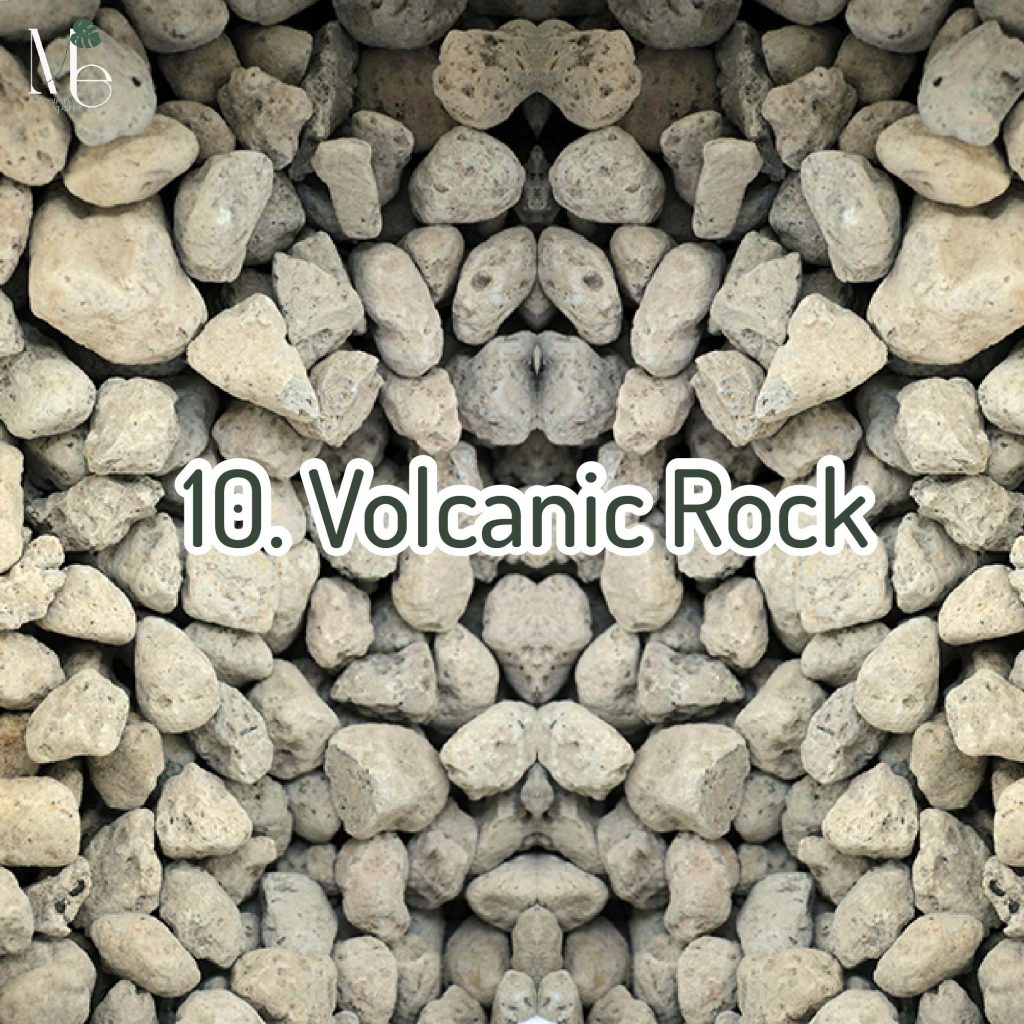
Volcanic rocks are rocks that come from volcanoes. It’s porous, lightweight, and buoyant. It also contains minerals such as silica, calcium, and magnesium, which are essential for plant growth. When mixed with other planting materials, it will increase the looseness and prevent the soil from clumping. Besides, volcanic rock can control the temperature of the soil, making it not to be too high. A small number of stones can be sprinkled on top of the soil to support the trunk and decorate it for beauty.
Growing a plant may use a combination of nearly 10 different planting materials to provide the plant with the appropriate habitat and enough nutrients. If you are raising many plants, we recommend buying planting materials and mixing them on your own to get the right proportions and save your money. However, if you use it a little, there are many online platforms to order. You can try ordering and planting it with your plant a little. If you get good results, then you can go ahead. Enjoy your planting!

